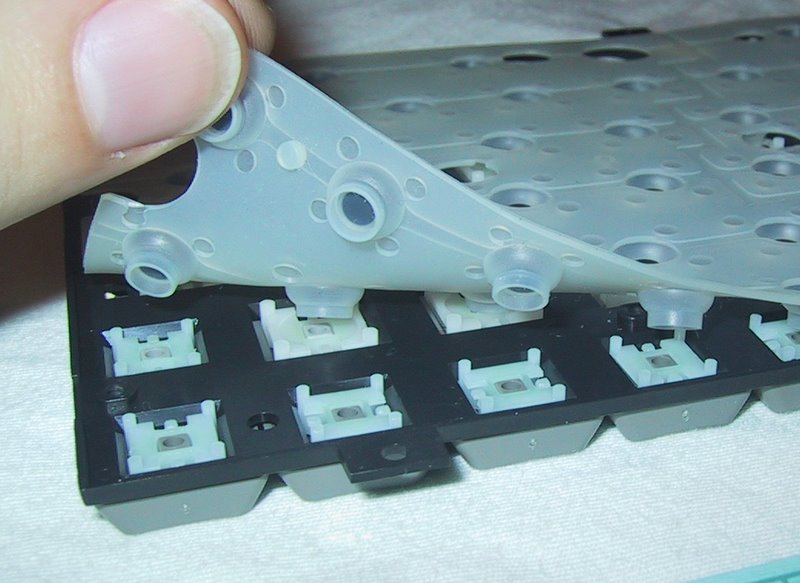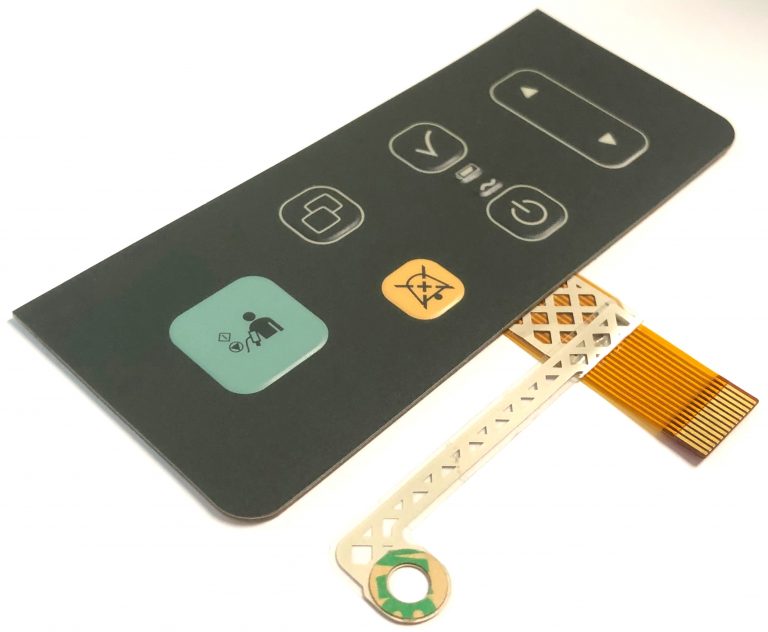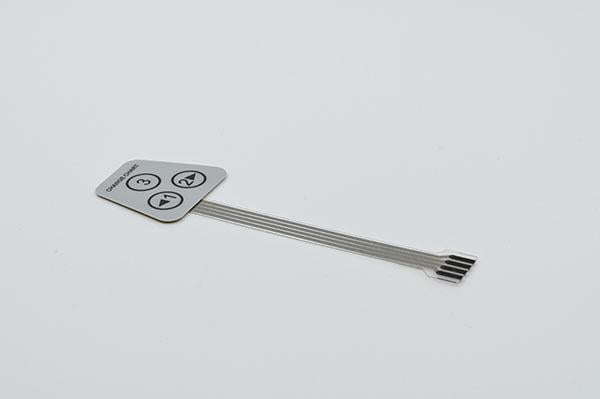Selecting the right membrane switch manufacturer can positively impact your product's quality.
Selecting the right membrane switch manufacturer can positively impact your product's quality.
Blog Article
All Concerning Membrane Switch Over: Recognizing Its Design and Functionality
When you think of the control user interfaces in contemporary gadgets, membrane layer switches often come to mind. These components are much more than simply switches; they blend layout and functionality effortlessly. Understanding just how they work and what makes them reliable can alter your viewpoint on daily electronics. Yet, there are subtleties to their design and efficiency that you might not recognize. Let's discover what collections membrane layer switches besides various other control systems.
What Are Membrane Switches?

Membrane layer switches can likewise be customized concerning form, dimension, and graphics, enabling makers to create unique interfaces tailored to details items. Overall, membrane buttons play a significant duty in enhancing user experience throughout a vast array of applications.
Just How Membrane Layer Switches Over Job
When you push a secret on a membrane button, it activates a straightforward yet efficient mechanism. The top layer, frequently made from versatile product, presses down onto a conductive layer below it. This activity bridges the space in between conductive traces, completing an electric circuit. As quickly as the circuit shuts, it sends a signal to the gadget's controller, which analyzes your input.
You'll notice that the tactile comments varies based upon the button style, supplying either a soft click or a more noticable action. As soon as you release the secret, the membrane layer go back to its original setting, reopening the circuit and stopping the signal. This process occurs almost immediately, ensuring a receptive customer experience.
Membrane layer switches are preferred as a result of their longevity and resistance to dust and wetness, making them excellent for numerous applications, from family devices to clinical tools. Comprehending this procedure assists you appreciate their prevalent use.
Trick Components of Membrane Buttons
Comprehending the vital components of membrane switches is essential for grasping their functionality and design. At the core, you'll discover the graphic overlay, which offers the visual user interface for customers. Beneath that, there's a spacer layer that divides the circuit layers, making certain that they don't make contact until pushed. The circuit layer is where the magic occurs; it contains conductive traces that finish the circuit when you push the button. Another crucial component is the adhesive backing, enabling the switch to stick to surface areas firmly. The protective layer guards against environmental factors and use, prolonging the switch's life-span. Each component plays a significant role in guaranteeing reputable performance and user communication. By comprehending these components, you'll get insight right into exactly how membrane switches run and their relevance in numerous applications.
Products Utilized in Membrane Layer Switch Over Design
The performance and sturdiness of membrane switches heavily rely on the products utilized in their design. You normally experience polyester and polycarbonate as primary substratums because of their exceptional toughness and flexibility. These materials resist scrapes and chemicals, making them ideal for demanding atmospheres.
The conductive layers often utilize silver or carbon, selected for their integrity and conductivity. membrane switch manufacturer. Silver provides exceptional performance, while carbon is an economical choice. For the overlay, you might think about a matte or shiny surface, depending on your aesthetic demands and individual experience
Make certain to select adhesives that endure environmental factors like temperature and humidity. Picking the ideal products will certainly assure your membrane switch stands the examination of time.
Style Factors To Consider for Membrane Layer Buttons
While making membrane switches, it's vital to take right into account numerous aspects that influence their performance and individual experience. Begin by concentrating on the format and switch size; make sure they're instinctive and easy to navigate. Consider the tactile comments you wish to offer-- will individuals require a recognizable click or a softer touch? Furthermore, think of the materials you'll use, as they'll affect longevity and looks.
Do not ignore the visuals layout; clear labeling and color comparison are significant for presence. Confirm your layout suits ecological factors, like wetness or temperature variations, which might affect efficiency. Lastly, keep in mind the relevance of screening models with real individuals to collect feedback and make needed adjustments. This iterative process helps you fine-tune the style, validating it meets both functional and visual demands successfully. By carefully thinking about these aspects, you'll create a membrane button that improves use and contentment.
Applications of Membrane Layer Buttons
Membrane layer switches are flexible components discovered in various applications, from commercial equipment to consumer electronics. You'll see their influence in machines that call for long lasting user interfaces and in tools that take advantage of sleek designs. Comprehending these applications aids you value the performance and usefulness of membrane buttons in daily innovation.
Industrial Tools Use
When you're looking to boost the performance of industrial tools, membrane layer buttons provide a reputable remedy that integrates longevity with easy to use style. These switches are ideal for harsh settings, supplying resistance to dirt, wetness, and chemicals. Welcome membrane layer buttons to enhance your operations and enhance overall efficiency.
Consumer Electronics Integration
In the domain name of consumer electronics, membrane layer switches play a vital role in boosting user communication and tool performance. Membrane layer switches also assure sturdiness and resistance to dirt and wetness, expanding the life-span of your electronic devices. By choosing membrane switches, you improve not simply the functionality however additionally the design of your tools, making everyday interactions smooth and enjoyable.
Advantages and Downsides of Membrane Buttons
While membrane buttons use a variety of advantages, they additionally come with some drawbacks that you need to think about. One significant advantage is their small style, making them perfect for space-constrained applications.

Nonetheless, there are drawbacks. Membrane buttons can have a much shorter lifespan compared to mechanical buttons, specifically under hefty use. They can additionally be less tactile, which might affect user feedback during procedure. In addition, if harmed, repairing them navigate to this website can be difficult and typically requires full replacement. Inevitably, their sensitivity to severe temperatures and environmental conditions might limit their performance in particular settings. Stabilizing these advantages and disadvantages will certainly help you determine if membrane layer switches are the ideal suitable for your project.
Often Asked Questions
How Much Time Do Membrane Layer Switches Usually Last?
Membrane changes normally last in between 5 to one decade, relying visit this website on use and environmental problems. You'll intend to examine aspects like wear, direct exposure to wetness, and temperature level variations to gauge their long life properly.
Can Membrane Layer Switches Over Be Personalized for Details Layouts?
Yes, you can customize membrane switches to fit particular designs (membrane switch manufacturer). You'll have the liberty to select shades, shapes, and formats that match your task's needs, guaranteeing they blend perfectly with your total aesthetic
What Is the Cost Range for Membrane Layer Switch Over Production?
The cost variety for membrane layer button production usually falls in between $1 and $10 each, depending on variables like style complexity, amount, and materials. You can get quotes from manufacturers to locate the most effective choice.

Are Membrane Switches Over Water-proof or Resistant?
Membrane layer buttons can be made to be water resistant or resistant, depending upon materials used and building methods. If you require them for wet settings, assure you define those requirements throughout the design procedure.
How Do Membrane Switches Over Compare to Traditional Switches?
Membrane switches are normally thinner and a lot more adaptable than standard switches, supplying a smooth layout. They're usually much easier to cleanse and incorporate, but may not supply the responsive feedback you're made use of to with mechanical choices.
Conclusion

Report this page